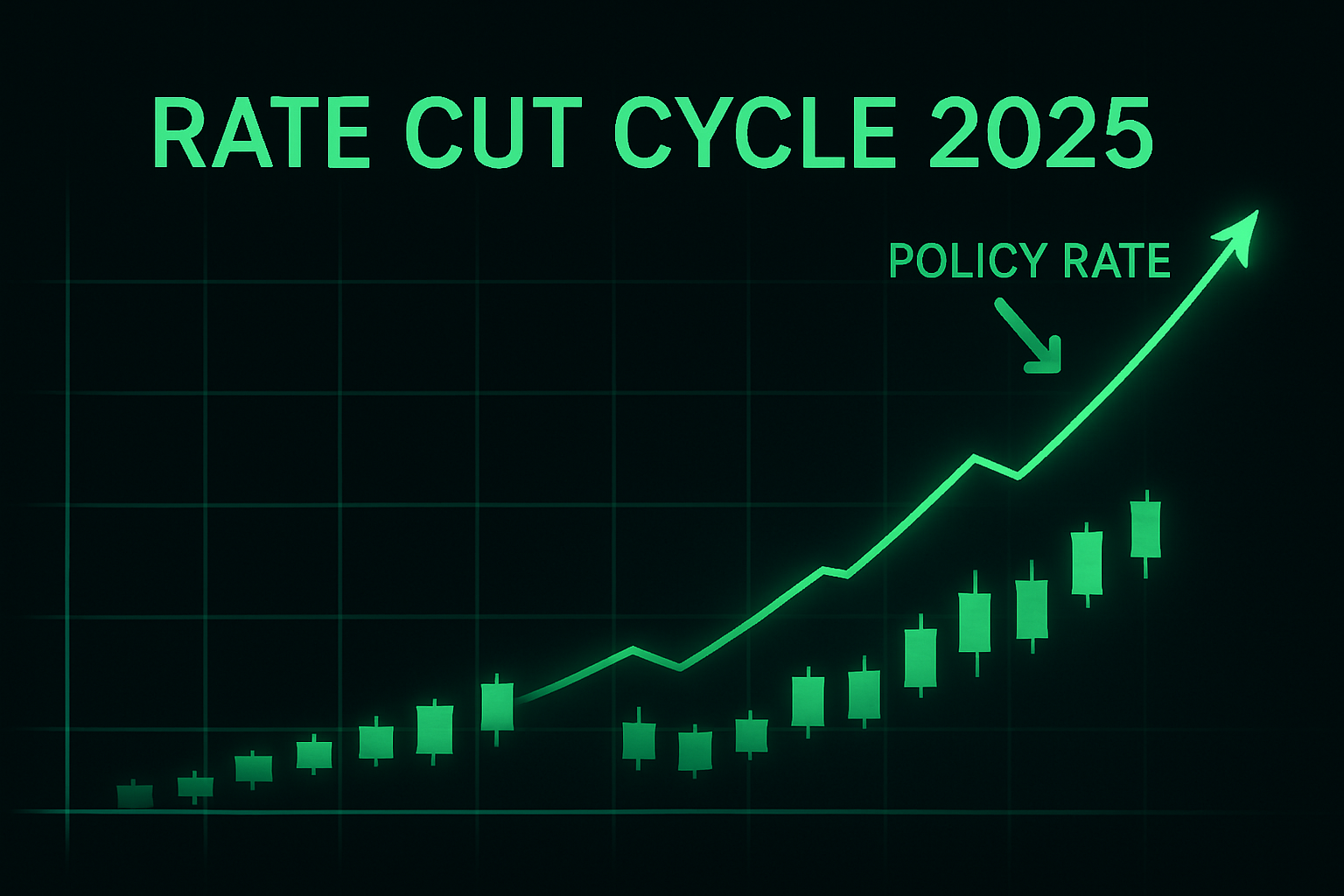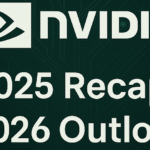What Corporate Bonds Are (and Why They Matter)
- A corporate bond is a loan to a company: you receive periodic coupons and your principal at maturity.
- Two broad buckets: Investment Grade (IG) for higher quality/lower yield and High Yield (HY) for higher risk/higher yield.
- Key risks: credit risk (ability to pay), duration (rate sensitivity), and liquidity (how easily it trades).
- Pricing is basically: risk-free rate + credit spread. Both can move the bond’s price.
2025 in Focus: What’s Driving the Market
Elevated Yields, Compressed Spreads
IG yields have sat in historically attractive ranges this year, with much of the income coming from high base rates rather than unusually wide spreads. That’s supportive—but also a reminder that credit risk isn’t being overpaid right now. For background on corporate yield ranges and spread dynamics, see Schwab’s corporate bond outlook.
Issuance Reopened After Policy Easing
The September 2025 rate cut helped thaw primary markets, with a wave of U.S. IG deals printing immediately after. Reuters covered the post-cut deal rush and calmer tone in credit:
IG deal flow and
policy backdrop.
FX & Cross-Asset Signals
Shifting dollar dynamics are bleeding into corporate credit, influencing flows and relative value across curves. For context, see Bloomberg’s discussion of how dollar doubts show up in credit markets
(Bloomberg).
On the caution side, The Economist flagged valuation complacency where some top-rated corporates yielded less than sovereigns—an unusual and fragile setup
(The Economist).
Why Investors Are Re-Engaging
- Income cushion: Higher starting yields provide a buffer if rates wiggle.
- Asymmetric potential: If policy eases into 2026, duration can help total returns.
- Diversification: Corporates behave differently than equities and sovereigns under stress.
- Fundamentals: Many IG issuers still carry robust balance sheets heading into 2026.
Risks to Watch (Late 2025)
- Spread shock: A growth scare or earnings downdraft could widen spreads quickly—especially in HY/crossover.
- Policy path: Markets expect more cuts, but an inflation surprise could slow that path. See ongoing fixed-income perspectives from Vanguard.
- Credit migration: Watch downgrades, fallen-angel risk, and default trends.
- Sector spillovers: Real estate or financial stress can ripple into credit pricing.
2026 Outlook: Base Case & What Could Change
| Factor | Expectation (2026) | Portfolio Implication |
|---|---|---|
| Policy rates | Gradual easing continues; not a return to zero (market outlook). | Lower base yields support IG total returns via price + carry. |
| Credit spreads | Sideways to modest widening from tight levels. | Security selection matters; avoid weakest balance sheets. |
| Total returns (IG) | Mid-single to low-double digits if cuts proceed and growth holds. | Attractive vs. cash if reinvestment risk rises. |
| Regional/sector dispersion | EM corporates benefit if USD softens; high-leverage sectors lag. | Tilt to quality; diversify across sectors/regions. |
Practical Implementation
- Favor quality: Keep a core in IG; be selective in HY.
- Ladder or barbell: Blend short and intermediate duration to manage rate risk.
- Set spread alerts: For example, IG OAS > ~130 bps as a reassessment trigger.
- Mind liquidity: Prefer issues with solid trading activity and clear disclosure.
- Position sizing: Avoid single-issuer and single-sector concentration.
Bottom Line
Corporate bonds are offering real income and reasonable upside into 2026—especially in higher-quality credit—so long as you respect spread risk and stay selective. If policy easing meets steady growth, IG credit can be a quiet outperformer; if growth wobbles, liquidity and quality will do the heavy lifting.
Further Reading
- Corporate bond market reaction after U.S. rating move (Reuters)
- Corporate bond outlook and fundamentals (Schwab)
- Dollar dynamics in credit (Bloomberg)
- Valuation risks in top-rated credit (The Economist)
- Active fixed-income perspectives (Vanguard)
Related on Green Candles Hub
Note: This content is for educational purposes only and is not investment advice. Markets involve risk, including loss of principal. Always do your own research.





